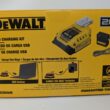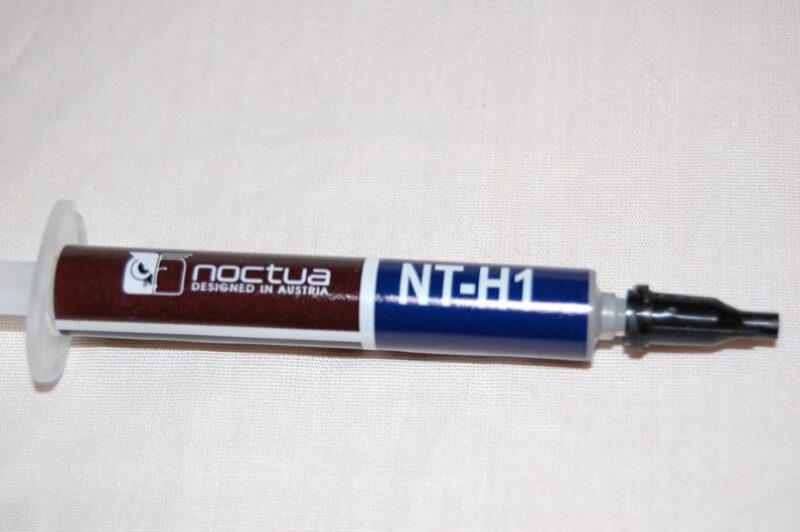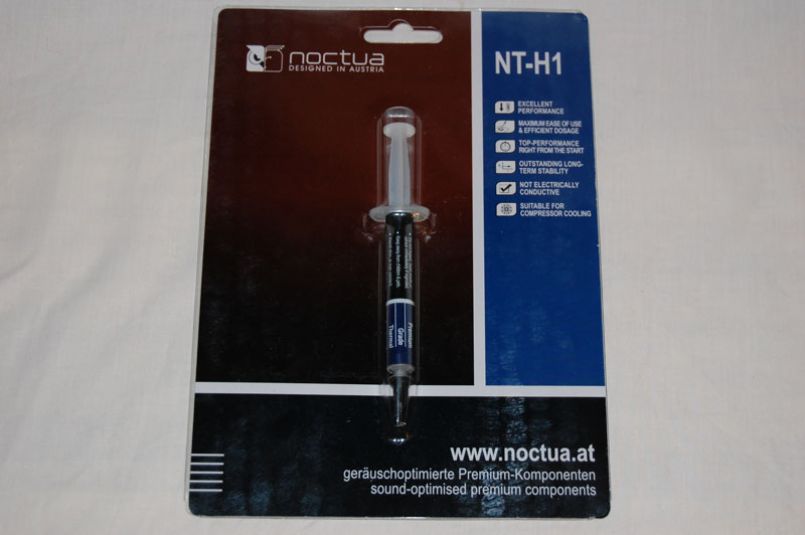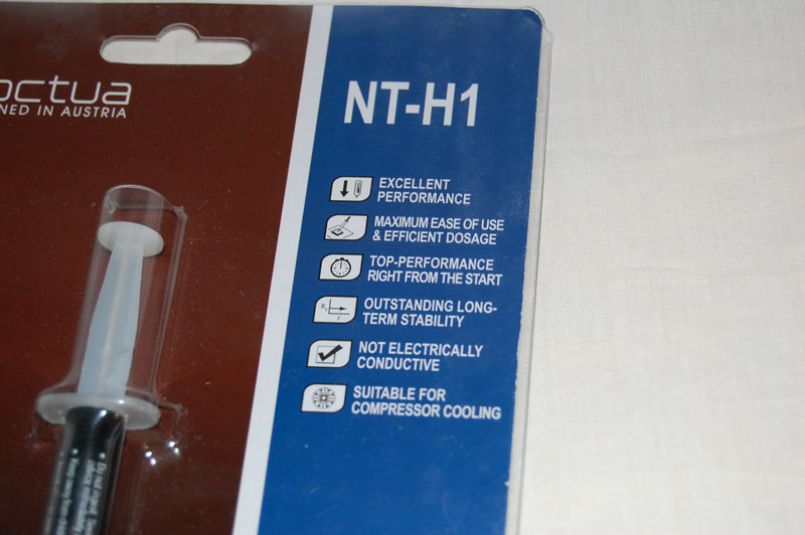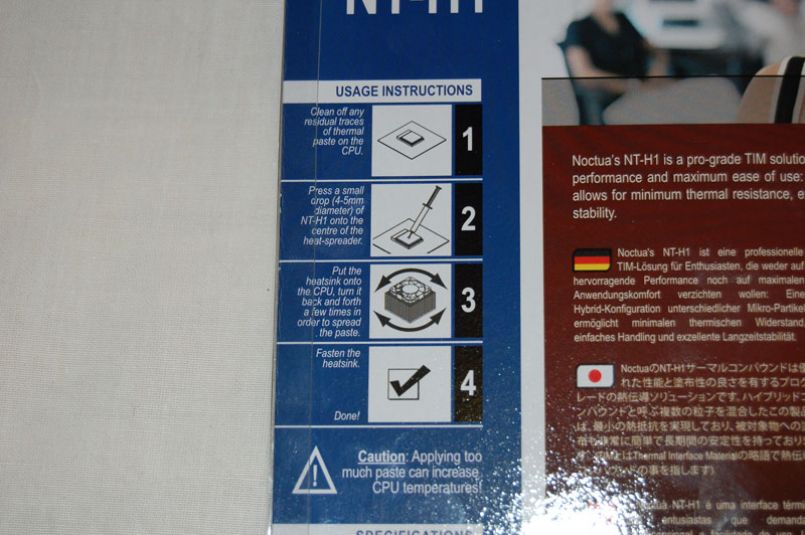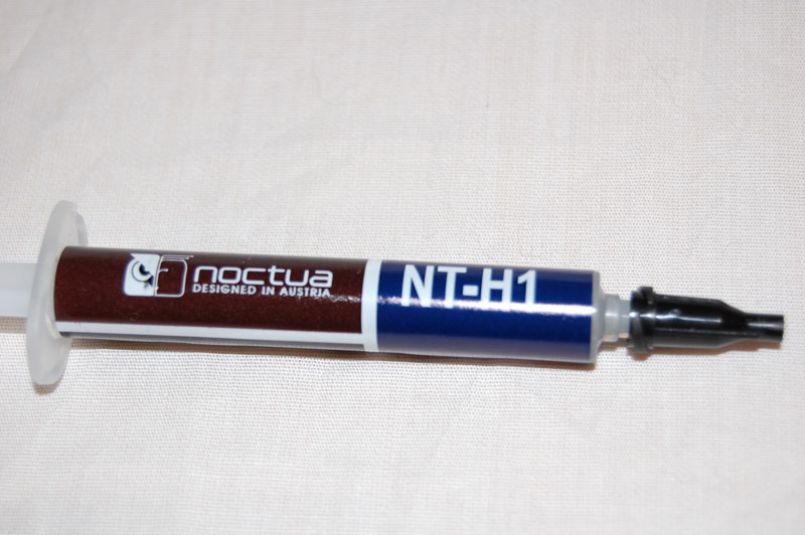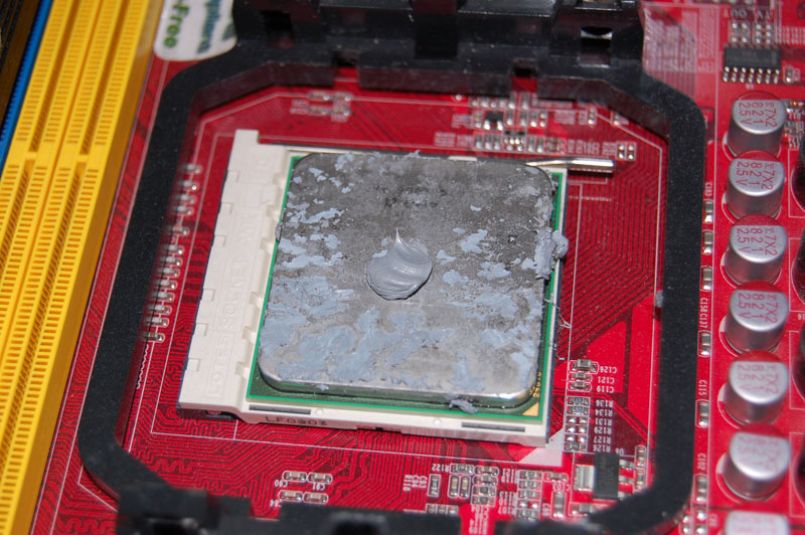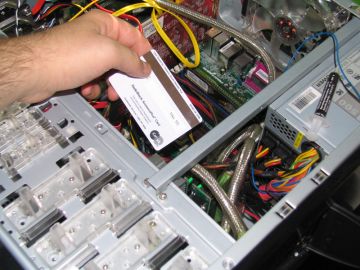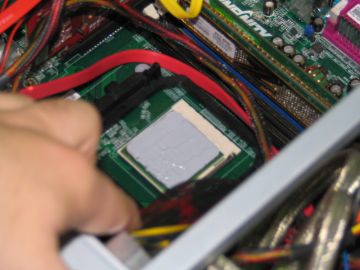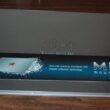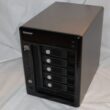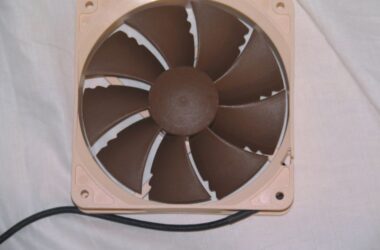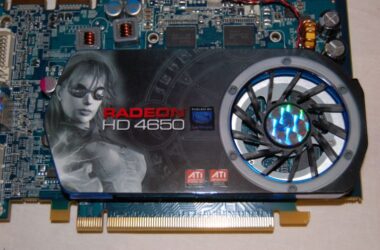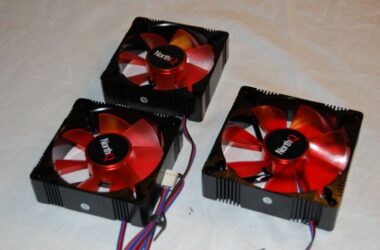Introduction
Regardless of how big a heatsink or how powerful a fan, a CPU will never properly be cooled without proper contact between the CPU and base of the heatsink. Improper or unsufficient heat dissipation can damage a CPU or even shorten its lifespan.
Over the years, various companies have introduced compounds claiming to be more effective than what was used the day before, and new methods to increase contact area such as heatsink lapping have come into practice to battle this problem.
Noctua, whose NF-P12 120mm case fan BIOSLEVEL.com previously reviewed, brings a pro-grade thermal compound to the table, NT-H1. The NT-H1 compound aims to minimize thermal resistance and provide long-term stability. BIOSLEVEL.com will put the compound to the test.
Packaging & Appearance
Like all of Noctua’s products, the NT-H1 comes in packaging bearing Noctua’s red and blue palette. The compound is held in place by a piece of plastic attached to the front of the packaging. A few features are listed on the front.
The back of the package lists instructions, warnings, and a few additional features.
The tube itself is not unlike the syringes seen from other companies’ products. Of course, this bears Noctua’s logo and colors.
Features
I’ve taken the feature list from Noctua’s product page for the NT-H1.
- Excellent performance
NT-H1 consists of a hybrid compound of different micro-particles, which has been specifically optimized for use in PC environments. Thanks to its extremely low thermal resistance as well as excellent pliability and spreadability, NT-H1 achieves outstanding results. - Maximum ease of use & efficient dosage
As NT-H1 spreads very well under pressure, there’s no need to smear it over the heat-spreader. This reduces both the consumption of paste and the time spent on the installation process: Put one drop of NT-H1 onto the centre of your CPU, install the cooler and that’s it! - Top-performance right from the start
NT-H1 reaches its full performance extremely fast and doesn’t require a longer “burn-in” time. - Excellent long-term stability
NT-H1 doesn’t contain any solvents or other substances with low flash point and provides excellent long-term stability. Due to the compound’s exceptional curing, bleeding, dry-out und thermal cycling characteristics, NT-H1 can be used for several years without any problems. - Not electrically conductive, non-corroding
NT-H1 possesses a very low dielectric constant and a high dielectric strength. Therefore, there’s no danger of short-circuits even in case of direct contact with components or conducting paths. Fully compatible with all materials commonly employed in PC environments, NT-H1 is suited for use with aluminium and copper coolers. - Suitable for compressor cooling
NT-H1 is perfectly suited for use with compressor coolers. Even at the very lowest temperatures, the paste delivers full performance and remains easy to clean off.
Specifications
| Volume | 1.4ml (for at least 15 applications) |
| Specific Gravity | 2,49 g/cm^3 |
| Colour | grey |
| Recommended storage time (before use) | up to 2 years |
| Recommended usage time (on the CPU) | up to 3 years |
| Peak operating temperature | -50°C to +110°C |
| Recommended operating temperature | -40°C to +90°C |
Installation
Before applying a thermal compound, it’s typically necessary to make sure the surfaces of both the CPU and heatsink are clean. If necessary, the heatsink’s surface can be lapped to a mirror shine.
I tend to use a cue-tip and rubbing alcohol to clean my surfaces. The combination typically works rather well against previously installed thermal compounds.
Noctua suggests twisting the heatsink in place to spread the thermal compound. To go with their suggestion, I did so, but the results were lackluster.
More compound stuck to the heatsink than anything else. This could be the result of a number of things: improper cleaning, poor surface, poor humidity conditions, etc. Thusly, I stuck with my favorite method.
The method in question: using the edge of an old credit card to spread the compound. If some drips off the edge, there’s nothing to worry about, as the compound is non-conductive.
Benchmark Setup
I’m using my primary test workstation, an AMD Phenom-powered machine built mostly from sponsored and previously reviewed products.
| Component | Part | |
|---|---|---|
| Processor | AMD Phenom 9500 | |
| Motherboard | Sapphire PI-AM2RS780G 780G | |
| RAM | 2GB DDR2 PC2-8500 Reaper HPC CrossFire Certified | |
| Video Card | Sapphire Radeon HD4850 Toxic | |
| Chassis | X-Qpack | |
| CPU Cooling | Scythe Katana II | |
| Hard Drive | Excelstor 250GB SATA2 | |
| Power Supply | Antec SmartPower 500W Modular PSU | |
| Display | 1280×1024 | |
| Operating System | Windows Vista Business SP1 64-bit / Gentoo 2008.0 64-bit | |
Performance
One of the features on Noctua’s packaging was “Top-performance right from the start”, meaning the compound didn’t need any burn-in time to “perform”. As my result
s will show, the NT-H1 does indeed perform from the start, but performance also increases after a few hours of usage.
In one test, I utilized OCCT to push the CPU to 100% usage and measured temperatures while the machine was both idle and under load. In a second test, I had the machine laborously compile KDE in Gentoo Linux. Let’s look at the average of the two tests.
| State | Stock Thermal Pad | NT-H1 Immediate | NT-H1 12-hour Burn-in |
|---|---|---|---|
| Idle | |||
| Load |
Final Thoughts & Conclusion
After look at Noctua’s NF-P12 120mm case fan, I was convinced that Noctua knew cooling. The NT-H1 thermal compound only reaffirms this. It also proves that every aspect of cooling is important, not just the size of a heatsink or speed of a fan.
A solid improvement is clearly visible in my test results — the NT-H1 compound works. There’s about a 12% increase in performance overall, and the results definitely favored leaving the compound some time to burn-in.
Sufficient to say that these results will have me using Noctua’s NT-H1 compound any time I mount a new heatsink in the future. Not only is the compound useful for CPU heatsinks, but could also be used in applications such as Northbridge or GPU heatsinks as well. Users will simply have to watch that not too thick an amount of compound is applied, as it could potentially damage the chip with the pressure of the heatsink clamp pulling down.
Pros
- Easy application
- Attractive and detailed packaging
- Very effective
- Non-conductive. Won’t damage electrical components by merely touching.
Cons
- None!


